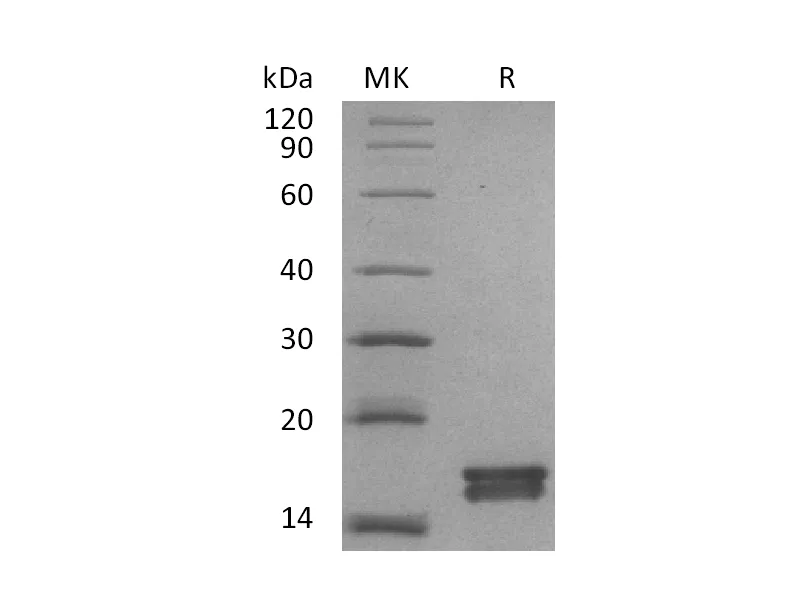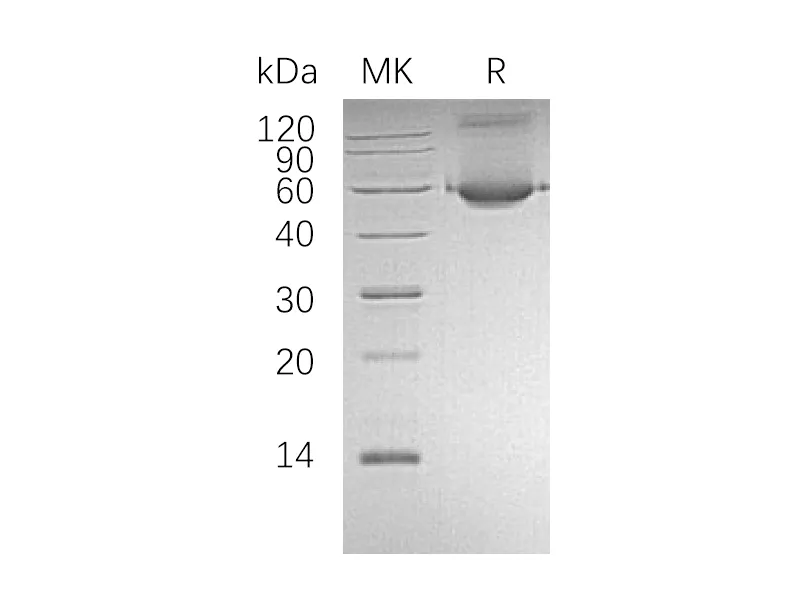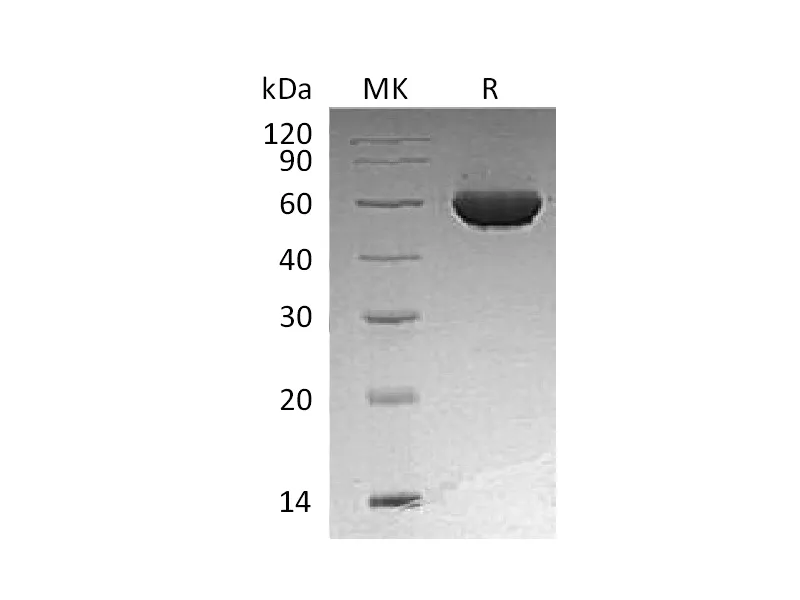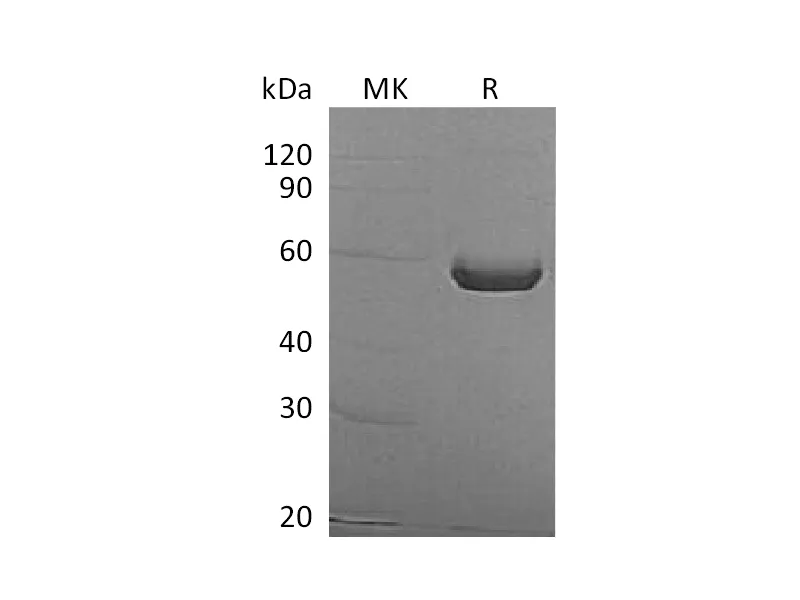Alternative Names
Tumor necrosis factor receptor superfamily member 21;Death receptor 6;Tnfrsf21;CD358;BM-018;DR6
Background
Tumor necrosis factor receptor superfamily member 21(DR6) is a single-pass type I membrane protein and contains 1 death domain and 4 TNFR-Cys repeats. The protein may activate NF-kappa-B and promote apoptosis and it may activate JNK and be involved in T-cell differentiation.It is required for both normal cell body death and axonal pruning. Trophic-factor deprivation triggers the cleavage of surface APP by beta-secretase to release sAPP-beta which is further cleaved to release an N-terminal fragment of APP (N-APP). N-APP binds TNFRSF21 triggering caspase activation and degeneration of both neuronal cell bodies (via caspase-3) and axons (via caspase-6).
Note
For Research Use Only , Not for Diagnostic Use.




